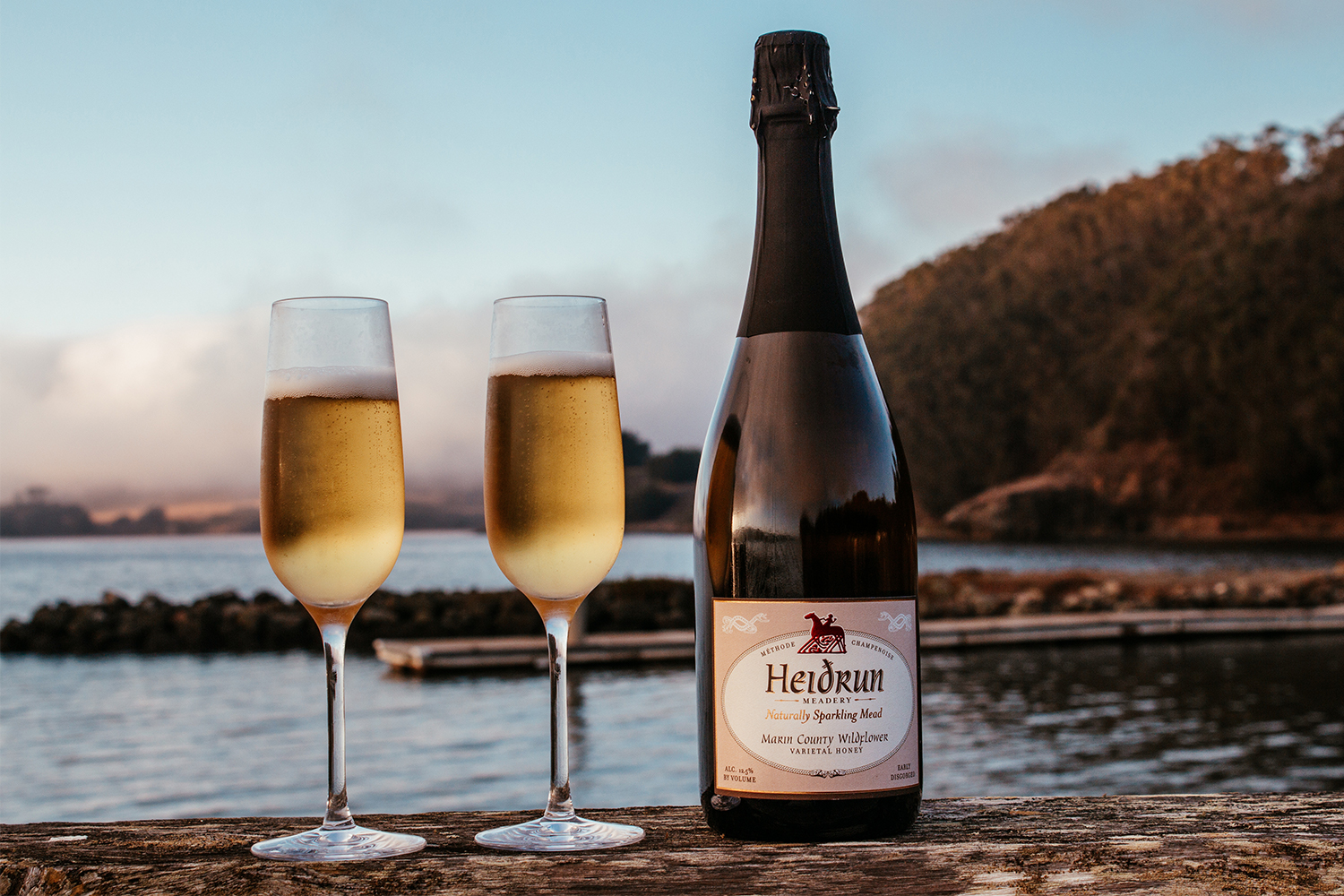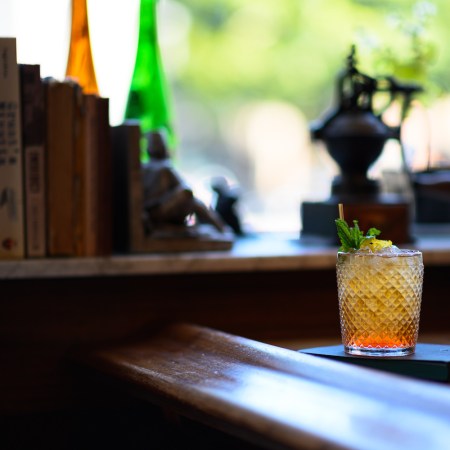The most quaffable Renaissance Faire fare is getting a makeover, thanks to a geologist-turned-mead maker based in Point Reyes.
For Gordon Hull, founder of Heidrun Meadery, his odd career shift has roots in the “natural affinity towards fermented beverages” possessed, he says, by “any good geologist.”
“When you’re a geologist, you get sort of an existential view of life, because you realize what an infinitesimally small impact we have on the universe as human beings,” he says, “and I think it takes sometimes a few beers to be able to celebrate that.”
And while beer was indeed the first fermented beverage Hull attempted at home, back in the late ’80s, once he decided to devote himself to brewing full-time, he quickly began fermenting not barley and hops, but honey — a decision he made in direct response to the relative dearth of delicious options.
“I can still remember the first mead I tasted,” he recalls. “It was sweet, it was brown and oxidized, and it kind of tasted like cardboard. I was not impressed at all.”
With his beer background, Hull was convinced he could craft a mead that was fresher, lighter and far more delicious than the “medieval” version he had sampled.
“If you consider what mead is made from, that it’s made from honey and that honey is the nectar of flowers, mead should be beautiful!” he says. “It should be light and crisp and lovely, like the flowers that it comes from.”
How Jason Kelce and a Member of the War on Drugs Recorded a Seasonal Beer Jingle
The song, “O Beer,” promotes the Kelce-owned Garage BeerHis mead at Heidrun capitalizes on modern winemaking techniques, including some gleaned from Champagne, to craft dry, sparkling meads with just “a suggestion of sweetness” thanks to the fruity character of the honey. They’re light years away from the heavily fruited and spiced characters of ancestral fermented honey beverages.
“We’re really fighting against the perception — accurate as it might be — as being something from Chaucer and The Canterbury Tales and Vikings,” he says. “Those styles have a place in our society, but that place is mostly Renaissance Faires and Viking reenactment ceremonies and that kind of thing.”
His meads exist, instead, as an alternative to beer or even wine, with their 12% ABV and affinity for food pairings.
Since his first forays into mead-making, Hull has experimented with fermenting no fewer than 30 different honeys from around the world. Each one brings different flavor notes to the table, and his curiosity knows no bounds.
“We’re in our 25th year and still finding new honeys to brew, and still exploring and discovering and just having a great time doing that,” he says. If you’re looking to delve into the wide world of mead but aren’t quite sure where to start, here are some of Hull’s favorites.

California Orange Blossom
This is Heidrun’s most popular varietal, and, according to Hull, “a really great inroad into what we do.” Made with orange blossom honey produced in the San Joaquin Valley, the mead is floral and aromatic.
“If you’ve ever walked through an orange grove when it’s in bloom, there is that quintessential citrus, floral aroma. And it’s captured in that mead, so when you stick your nose into that glass, you are smelling an orange grove in bloom. And then it has this flavor that’s fascinating: both sort of an orange candy flavor and yet dry, very crisp, fruity and refreshing.”
Madras Carrot Blossom
An Oregon beekeeper makes the unique honey at the root of this mead by reaping the benefits of the carrot blossoms at a local seed farm.
“The honey itself is dark,” says Hull. “It’s fairly pungent. It’s not actually very pleasant honey itself; it’s a little bit bitter and tastes a little bit vegetal. It’s not something that we would put in a jar and then enjoy on toast in the morning.”
While Hull notes he was skeptical of using this honey to make mead at first — “I didn’t want the mead to taste like boiled broccoli or something like that” — he persevered in the experiment and he was rewarded.
“Lo and behold, through the process of fermentation, the flavor compounds in the honey have been altered, and some of it is more muted, and some of it is amplified, and what we ended up with is a mead that tasted very similar to a Belgian saison. It has a distinct flavor of incense and wood and earth. I even get a note of patchouli in it.”
It’s the mead he recommends most often to beer aficionados, and as the perfect pair for lamb.
Oregon Pumpkin Blossom
This autumnal mead also begins with a darker honey that Hull characterizes as “a little bit more appealing” than the carrot for drizzling on one’s toast or into tea.
The resulting mead “is also dark and sort of warm and still sparkling and dry and crisp, but a little bit more warming with some really lovely herbal qualities to it, a little bit grassy.”
It also has a similar beer character, though if the Carrot Blossom is like a saison, this one’s an ale.
Oregon Meadowfoam Blossom
A plant native to the Pacific Northwest, meadowfoam is primarily a commercial crop, with the oil from the seed used in a great many cosmetics.
“The interesting thing about the honey is that, from a culinary point of view, it has the really beautiful flavors of clove and vanilla,” says Hull.
And unlike the pumpkin and carrot honeys, in this case, “the mead is very much like the honey,” according to Hull, “in that it has a pronounced clove flavor to it, and sort of those clove, nutmeg spices that you would find in a Thanksgiving dinner, with a very delicate finish to it.”
Every Thursday, our resident experts see to it that you’re up to date on the latest from the world of drinks. Trend reports, bottle reviews, cocktail recipes and more. Sign up for THE SPILL now.

























